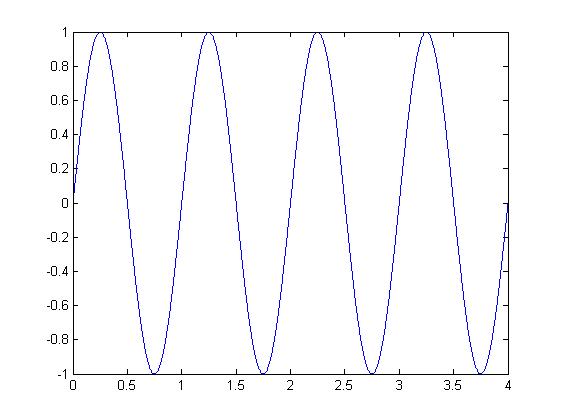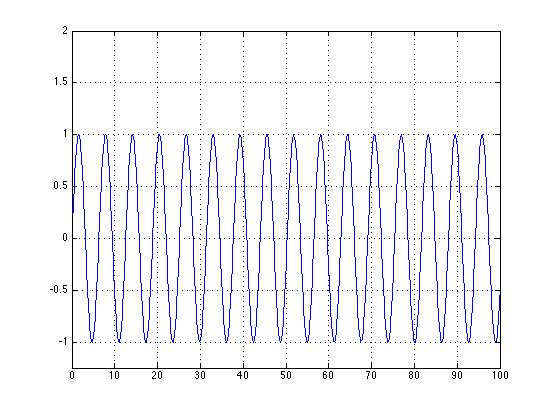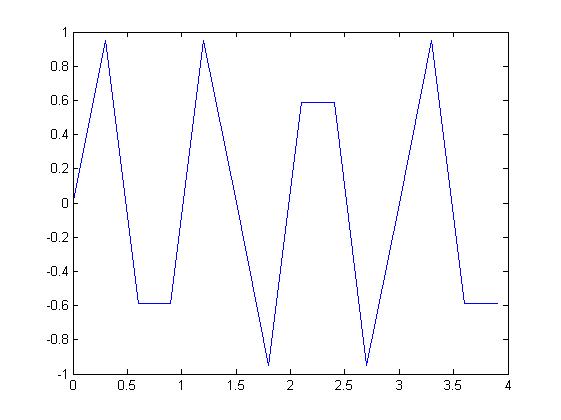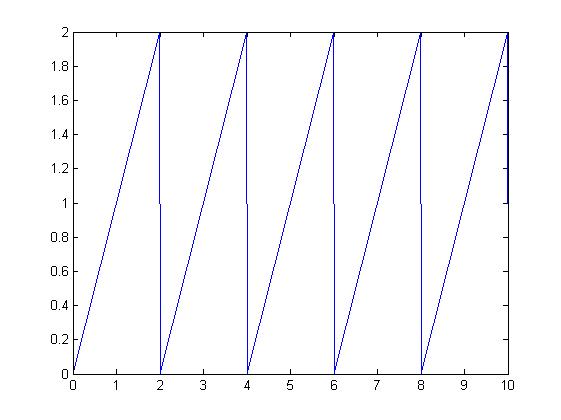(→A-2 Create periodic signal with infinite number non=periodic signals) |
|||
| (4 intermediate revisions by the same user not shown) | |||
| Line 3: | Line 3: | ||
I choose <math>x(t) = sin (2\pi t),</math> which is a periodic CT signal | I choose <math>x(t) = sin (2\pi t),</math> which is a periodic CT signal | ||
original plot: | original plot: | ||
| + | |||
[[Image:hw1-1_ECE301Fall2008mboutin.jpg]] | [[Image:hw1-1_ECE301Fall2008mboutin.jpg]] | ||
| − | + | ||
| + | Sampling delta t = 0.1, discrete dots become periodic signal: | ||
| + | |||
| + | |||
[[Image:hw2-1_ECE301Fall2008mboutin.jpg]] | [[Image:hw2-1_ECE301Fall2008mboutin.jpg]] | ||
| + | |||
| + | non-period signal with delta t = 0.3 | ||
| − | |||
[[Image:hw2-2_ECE301Fall2008mboutin.jpg]] | [[Image:hw2-2_ECE301Fall2008mboutin.jpg]] | ||
| + | |||
| + | |||
| + | ==A-2 Create periodic signal with infinite number non=periodic signals== | ||
| + | |||
| + | I use <math>y=t</math> adding infinite together | ||
| + | <pre> | ||
| + | %MatLab code | ||
| + | t=0:0.001:10; | ||
| + | y=mod(t,2); | ||
| + | plot(t,y,'b-') | ||
| + | </pre> | ||
| + | |||
| + | [[Image:hw3-4_ECE301Fall2008mboutin.jpg]] | ||
Latest revision as of 16:13, 12 September 2008
A-1 Creating two DT signals (one periodic and one non-periodic) from a periodic CT signal
I choose $ x(t) = sin (2\pi t), $ which is a periodic CT signal original plot:
Sampling delta t = 0.1, discrete dots become periodic signal:
non-period signal with delta t = 0.3
A-2 Create periodic signal with infinite number non=periodic signals
I use $ y=t $ adding infinite together
%MatLab code t=0:0.001:10; y=mod(t,2); plot(t,y,'b-')





